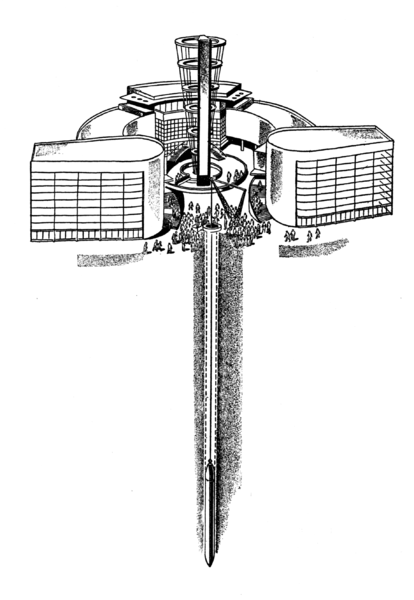The Berkshires Bowling Alley that Inspired "The Big Lebowski"
It’s been 36 years since the release of The Big Lebowski, the irreverent cult comedy by Joel and Ethan


On September 23, 1938, an 800-pound tube made of an alloy of copper and chromium called Cupaloy was lowered 50 feet into the ground at the site of the Westinghouse Electric & Manufacturing Company exhibit of the 1939-40 New York World’s Fair. The tube’s contents comprised 35 items one might find in any run-of-the-mill Smith family household, including copies of Life magazine, a Sears Roebuck catalog, cigarettes and seeds of wheat, corn, alfalfa and soy, each examined and preserved in inert argon and nitrogen gas to remain intact for the next five thousand years–until the year 6939 to be exact.
The device was an engineering feat, a “time capsule” as notable New York public relations counselor George Edward Pendray called it for the very first time in 1939. You can visit the site of the time capsule on our upcoming tour of the Remnants of the World’s Fairs at Flushing Meadows-Corona Park!
 Photo via Wikipedia Commons, The Story of the Westinghouse Time Capsule
Photo via Wikipedia Commons, The Story of the Westinghouse Time Capsule
The burying of the first Westinghouse Time Capsule in Flushing Meadows-Corona Park was one of the last and most widely publicized events of the two-year 1939-40 World’s Fair. The capsule itself was accompanied by a record of its contents that also included extensive instructions detailing its recovery accounting for changing geography, political boundaries and even the loss of modern timekeeping (look to the stars, the book advises). This record was then distributed in the thousands to museums and libraries across the world in the event that any one copy, even the original, might be lost.
Its closing lines read as follows: “Each age considers itself the pinnacle & final triumph above all eras that have gone before. In our time many believe that the human race has reached the ultimate in material and social development; others, that humanity shall march onward to achievements splendid beyond the imagination of this day, to new worlds of human wealth, power, life, and happiness. We choose, with the latter, to believe that men will solve the problems of the world, that the human race will triumph over its limitations and its adversities, that the future will be glorious. TO THE PEOPLE OF THAT FUTURE, WE LEAVE THIS LEGACY.”

Burial schematic from the record of Westinghouse Time Capsule I. Image from Wikimedia Commons.
The words themselves recall an air of economic, scientific and cultural optimism that epitomized the 1938 Fair, an event that saw the first public demonstrations of color photography, air conditioning, nylon and the fluorescent lamp. Taking a freeze-frame portrait of the world as its builders saw it in the fall of 1939, the Cupaloy tube encapsulated (quite literally) the Fair’s and Committee President Grover Whalen’s stated mission: to present “a new and clearer view of today in preparation for tomorrow.”
There are many things that come to mind about a world so far into the future, thanks to popular culture and decades of films like “Planet of the Apes” and “The Time Machine.” Predictions range from humans evolving beyond organics, destroying civilization with war or leaving Earth altogether. But to Whalen, along with industry giants and sponsors like General Motors, U.S. Steel and the 44 million people who attended the Fair’s events over the course of two years, the future was not defined by the question of “what would happen in the next five thousand years” but rather the question of “what would we make happen.” As the official pamphlet of the Fair states, “Here are the materials, ideas, and forces at work in our world. These are the tools with which the World of Tomorrow must be made.”
And yet, despite the fanfare, and the unveiling of now-iconic “World of Tomorrow” attractions like the Duchess of Hamilton steam engine train and the highway dominated model “Futurama” city, the world outside remained real and troublesome as ever. The United States continued to drag its feet on its slow road to economic stability after the Great Depression. A year after the 1939-40 Fair closed, the country would formally enter into World War II and see 400,000 of its soldiers killed in battle.
But even then, that now 76-year old capsule reminds us that for two years amidst the dark of the 1930s and 40s, there existed a small pocket of fluorescent light off of what is now the Long Island Expressway, the promise of a faster, smarter new era that the world came together to start building, all with a few household items and a metal tube. In the year 6939, that pocket of light will still be there, buried in the earth, waiting for whoever may be around to find it.
You can see the capstone on top of the site of the time capsule inside the park today and visit it on Untapped Cities’ Tour of the Remnants of the World’s Fairs at Flushing Meadows-Corona Park!
Next, read about the underground luxury home bomb shelter buried at the 1964 World’s Fair that still may be there and see what was inside the time capsule at the New York Historical Society, opened a century later in fall 2014.
Subscribe to our newsletter